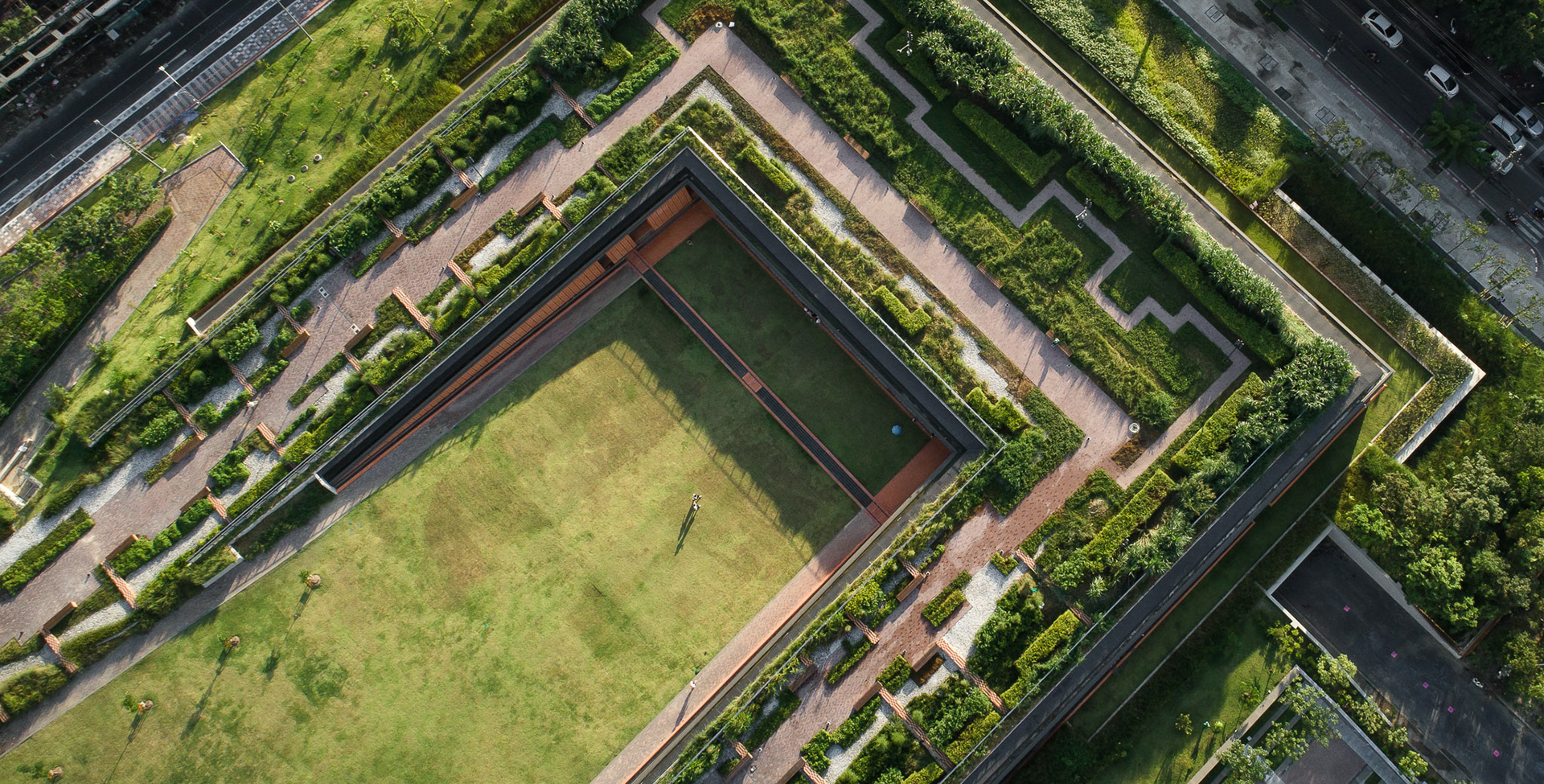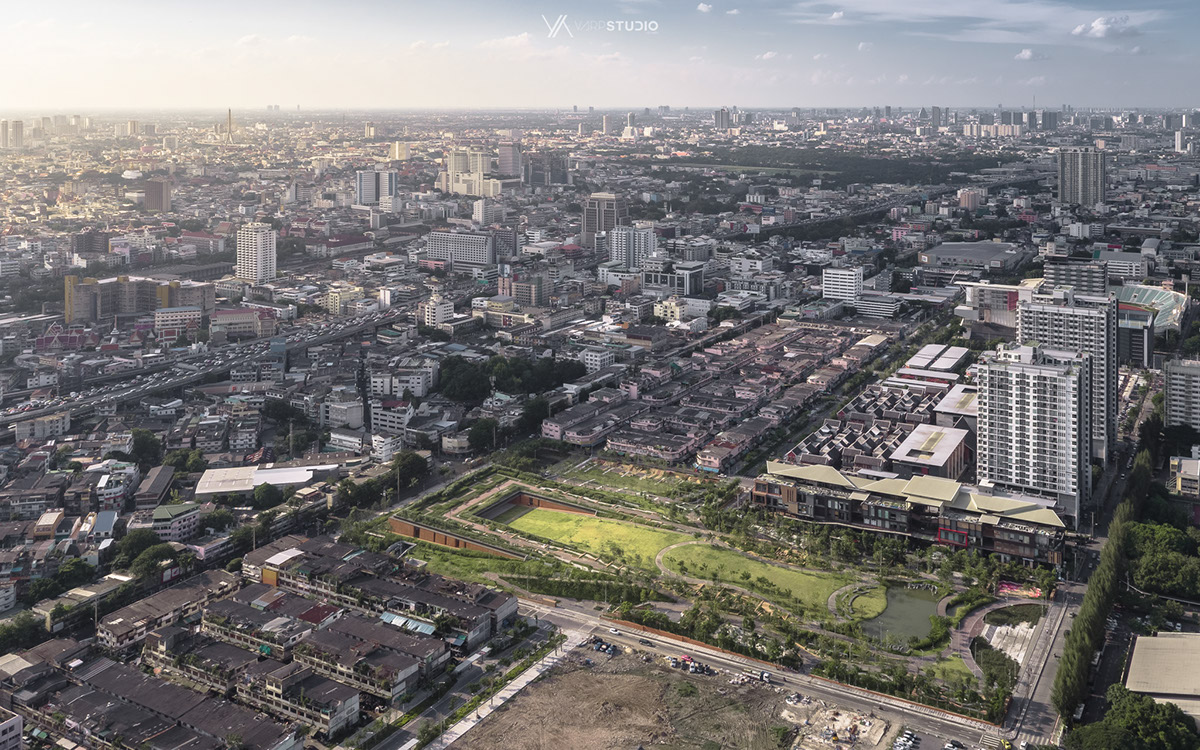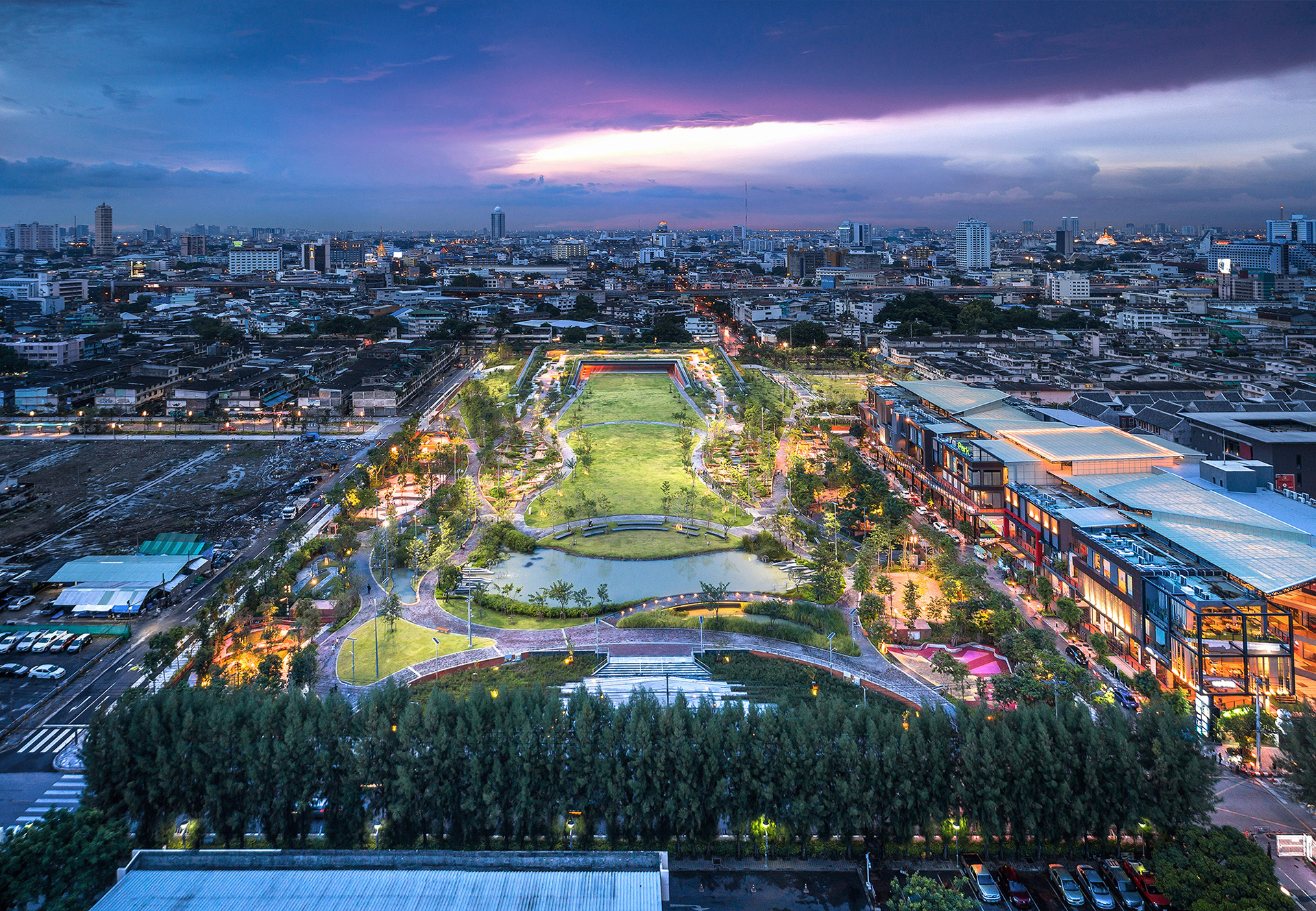Bangkok is sinking.
Spilling out across the delta of the Chao Phraya River, the Thai capital was once known as the Venice of the East for its network of canals.Today, thanks to explosive development, many of those waterways have been filled with cement.
With nowhere for water to go, Bangkok has become notorious for frequent, destructive floods, sometimes after as little as 30 minutes of rain. The reality is that this city of 20 million people, built on shifting river mud, is sinking at the rate of more than one centimeter a year and could be below sea level as soon as 2030.
Thai landscape architect Kotchakorn Voraakhom, a TED Fellow, watched firsthand as her city became a dense concrete jungle. “When I was young, there were rice fields and canals in the city,” she remembers.
“I could hear boats from my house in central Bangkok. Now, all those fields and canals have been stopped with concrete and covered by highrises. All of the buildings and concrete become obstacles for water to drain, so the city floods.”
At her Bangkok firm Landprocess, Voraakhom designs parks, gardens, green roofs and bridges that address the city’s flooding problem while also reconnecting residents to their natural environment. “We’re so much in the buildings,” she says. “I think it’s very necessary for us, as urbanists, to have places where we can reconnect to our nature, to Mother Earth. Just to see the sky.”


Voraakhom’s latest completed project is a dazzling park in the center of Bangkok, set on the campus of Chulalongkorn University.
She has transformed 11 city acres — land worth an estimated $700 million USD — into Chulalongkorn University Centennial Park, a lush, green oasis featuring ample space for outdoor meetings, an amphitheatre, a massive lawn for recreation, playgrounds, even a small museum.
Since it opened in March 2017, the park has been a huge draw for students and residents (one local podcast called it a “hidden gem”). And while 11 acres (or 44,415 square meters) may not sound like much, any new park in green space-starved Bangkok is a big deal. According to Siemens Green City Index, Bangkok has just 3.3 square meters of green space per person (by contrast, Manila has 5; Paris, 11; Shanghai, 13.5; New York City, 23.1; London, 27; Singapore, 66).
But CU Park plays other important functions for the flood-prone city too: it collects and cleans water and reduces the urban heat island. The most amazing part of CU Park? It can hold nearly one million gallons of water during severe floods.
(To put that into context, one million gallons is equivalent to an American football field being completely filled with water at a depth of 1.13 meters, or 3.71 feet.) Essentially, Voraakhom has created a flood-proof park by building it to flood.

In designing the park, Voraakhom had two major inspirations: the rain tree and a monkey’s cheeks.
Chulalongkorn University, the oldest institution of higher education in Thailand, commissioned the space to celebrate its 100th birthday. So when Voraakhom began her preliminary designs, she turned to the university’s symbol: the rain tree.
“It has a very significant, far-reaching root system, and the branches overreach and create shade and ecology for its surroundings,” Voraakhom says. “This park is a metaphor for creating this big rain tree for society. We want this green infrastructure to expand like a root of a tree into the city.”
To mimic the tree’s expansive branches and water-absorbing roots, Voraakhom added green pathways along the heavily trafficked road that runs perpendicular to the park.
She enlarged the road from 12 meters to 30 meters, but actually reduced car lanes and replaced them with bike paths and proper walkways – unheard of in Bangkok. (In fact, she believes her park is the very first time that a major road in Bangkok has traded traffic lanes for walking paths.) Pedestrians and cyclists now flock to the cooling shade of the tree-lined pathways emerging from each side of the park.
Now, about those monkey’s cheeks. King Bhumibol, Thailand’s monarch from 1946 until his death in 2016, often used the metaphor of monkey’s cheeks to describe how Bangkok could adapt to flooding.
Just as a monkey holds food in its mouth until it needs to eat, he said, so too should Bangkok be able to hold flood water until the city can use it. This concept inspired Voraakhom to build water-retention components into the park: a green roof, wetlands, a detention lawn and retention pond.

CU Park cleverly harnesses the power of gravity.
Voraakhom designed her park to sit at a gradual three-degree angle so that gravity pulls rain and flood water from the park’s highest point — the green roof — to the lowest point at another end of the park, where it fills a retention pond.

The park has Thailand’s largest green roof.
At the western end of the park, a 5,220-square-meter green roof covers the new CU Park Museum. The roof, which is covered with native grasses and weeds, requires little maintenance; it’s both strong enough to absorb large amounts of water during the July-to-October wet season and hardy enough to weather the March-to-June hot season.
Voraakhom’s favorite spot in the entire park is on top of this green roof, which rises 10.5 meters (or 34.4 feet). “Normally Bangkok is so flat, and you don’t experience elevation when you go to a park,” she says. “But here, when you go up into the green roof, you can see the new view of the city, and it’s a very different experience. Even though I was born here and lived here for all of my life, this is still a very surprising view of Bangkok.”

Storage tanks hide under the green roof.
Three large tanks below the roof and museum can hold up to 250,000 gallons of runoff water from the green roof. During the dry season, rainwater in these tanks can keep the park watered for up to 20 days. “No drop of water that falls into the park is wasted,” Voraakhom says. A lawn next to the museum also collects rainwater; its rounded, spoon-like shape can accommodate more than 105,000 gallons of water.
Wetlands filter the water and create space for children to explore.
Rain water also collects in four connected wetlands along the park, which contain a cascading series of dams and ponds. The wetlands feature native aquatic plants that clean and filter the water — and provide a haven for children. “Kids love to play in these spaces, where they can engage directly with nature,” says Voraakhom.
University students also have many good reasons to spend time inside the park. There are eight outdoor seating areas that run along the sides of the park, as well as a herb garden and amphitheater. “Chulalongkorn University is the biggest and oldest university in the city, like the Harvard of Bangkok,” Voraakhom says. “So the park needs to serve the university community, for large events like commencements, as well as be a place for recreation and exercise for the surrounding communities.”
During mild rains, water flows through the wetlands and into the retention pond, where it gradually evaporates. In a fun and practical touch, park visitors can hop on stationary water bicycles along the pond, simultaneously exercising while keeping the water moving and adding oxygen to it.
But in the case of severe flooding, the retention pond can nearly double in size by expanding onto the park’s porous main lawn.
All together, the park is designed to hold up to one million gallons of water. “With the retention pond and lawns, we can hold the flood water as long as we want if the entire city is flooded,” Voraakhom says. “Then, eventually we can drain the park into the public sewage system when all the other flooding in the city has been drained.”

Source: https://ideas.ted.com/when-bangkok-floods-and-it-floods-a-lot-this-park-does-something-amazing/


















